While election coverage dominated the headlines this October, social media has been quietly cooking up some interesting changes. Meta’s testing new ways to customize ad displays across its platforms with their “Flexible Media” option, TikTok’s making music discovery seamless with Apple Music and Spotify integration, and Threads is surprisingly thriving with 275M monthly users. Meanwhile, Pinterest is letting AI join the creative department with innovative ad tools, and LinkedIn is breaking engagement records yet again.
Let’s dive into what’s been happening across social.
Meta’s Ecosystem: Balancing Innovation and Responsibility
Facebook’s Strategic Shifts
Meta is revolutionizing its advertising approach with the introduction of “Flexible Media,” representing a significant step toward automated ad delivery. This new system allows Meta to optimize ad placement across different placement groups, effectively choosing which version of your ad to show to different audiences. It’s part of a broader push toward automation, complementing their existing Advantage+ campaign tools.
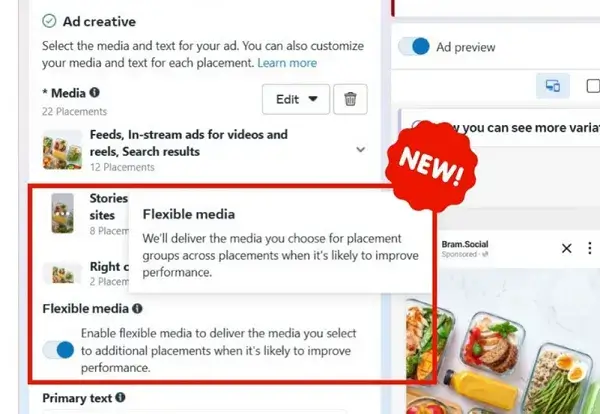
The system works by allowing advertisers to submit multiple media options, with Meta’s AI determining the optimal display for each placement group. While some advertisers might feel hesitant about relinquishing control, early data suggests that Meta’s AI-driven approach could deliver superior results by leveraging its vast user behavior data.
Instagram’s Creator-Focused Evolution
Instagram has rolled out significant upgrades to its DM system, specifically targeting the needs of creators and influencers. The new features include sophisticated sorting and filtering options for message requests, allowing users to organize incoming messages by follower count, verified accounts, brands, and creator status. A dedicated “Story Replies” folder has also been introduced, streamlining the way creators manage their audience interactions.
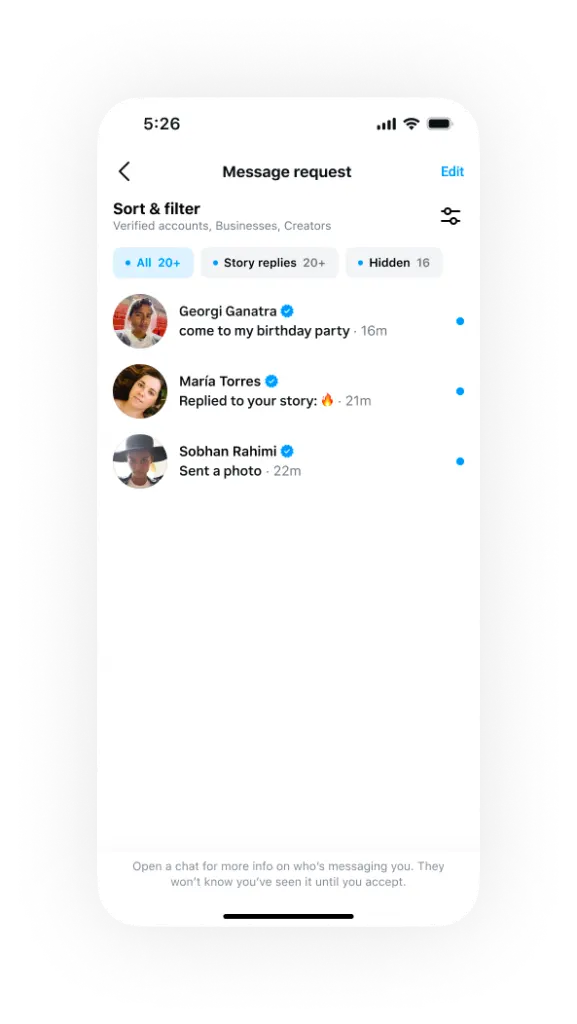
In a particularly interesting development, Instagram has implemented a dynamic video quality system. According to Adam Mosseri, the platform adjusts video quality based on aggregate viewing patterns, with more popular content receiving higher quality encoding. While this has sparked some debate about creating potential advantages for established creators, Mosseri maintains that content substance remains the primary driver of engagement rather than video quality.

Threads’ Remarkable Growth Story
Meta’s text-focused platform Threads continues to exceed expectations, reaching 275 million monthly active users. Unlike some social platforms that see rapid growth followed by sharp declines, Threads has maintained steady user engagement by positioning itself as a complementary experience to Instagram rather than a direct competitor to other text-based platforms.

The platform’s success appears to stem from its strategic integration with Instagram’s visual-first ecosystem while maintaining its own distinct identity for text-based conversations. This dual approach allows users to maintain their existing Instagram connections while building new engagement patterns through text-based interactions.
What’s particularly noteworthy about Threads’ growth is that it has achieved this milestone organically, primarily through user satisfaction and word-of-mouth rather than aggressive marketing campaigns. The platform’s focus on fostering genuine conversations while leveraging Instagram’s existing social graph has proven to be a winning combination.
TikTok: Enhancing Music Integration and Marketing Tools
TikTok has significantly upgraded its music integration capabilities with a new “Share to TikTok” feature, enabling seamless sharing from Apple Music and Spotify. This update includes various sticker types for highlighting tracks and the ability to share music through DMs, with stickers linking directly back to the streaming services. Given TikTok’s significant role in music discovery – with 75% of users finding new artists through the platform – this integration strengthens its position as a key player in the music industry.
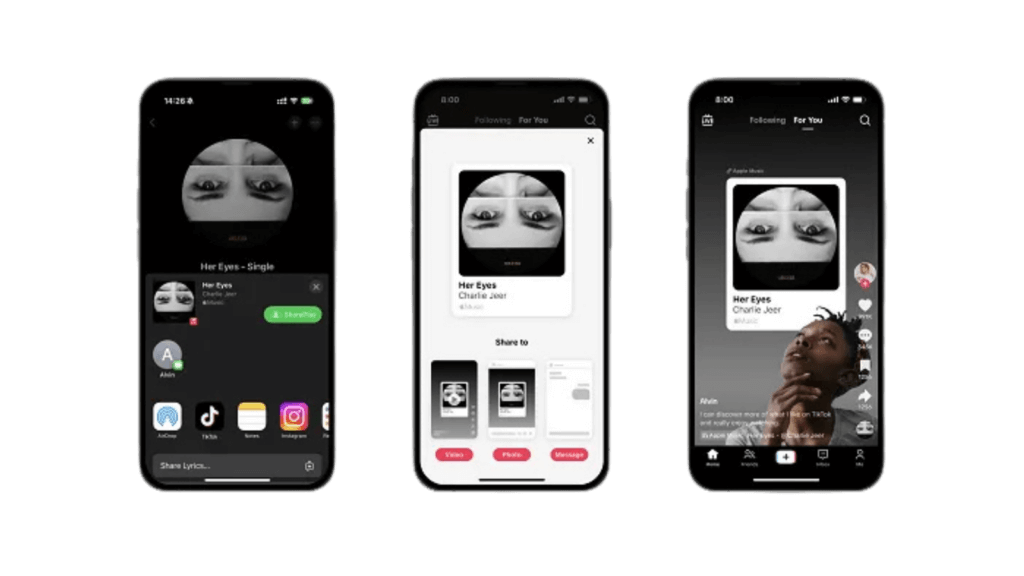
The platform has also released a comprehensive guide for post-holiday marketing, introducing the concept of “Q5” – the period between post-Christmas and early new year.
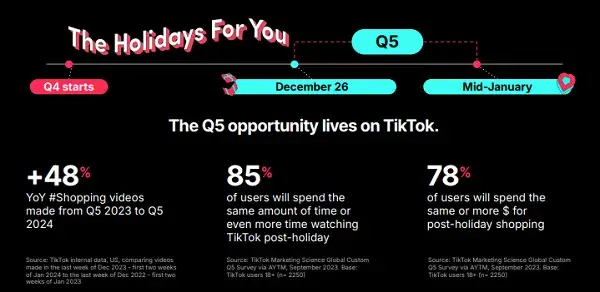
This guide provides valuable insights into consumer behavior during this often-overlooked period, noting that while shopping interest remains high, the focus shifts toward self-care and new year-related content.
LinkedIn: Record Engagement Amid Transparency Questions
LinkedIn continues to report record engagement levels, though questions remain about the platform’s metrics reporting. While LinkedIn celebrates reaching a billion members, industry analysts note that actual active user numbers likely represent a smaller percentage of this total – possibly around 300 million active users, based on EU data patterns.
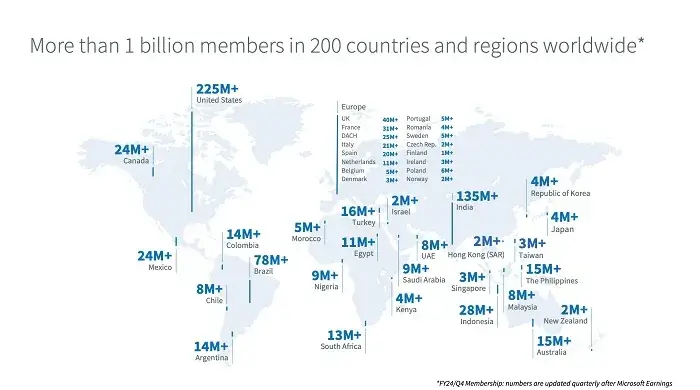
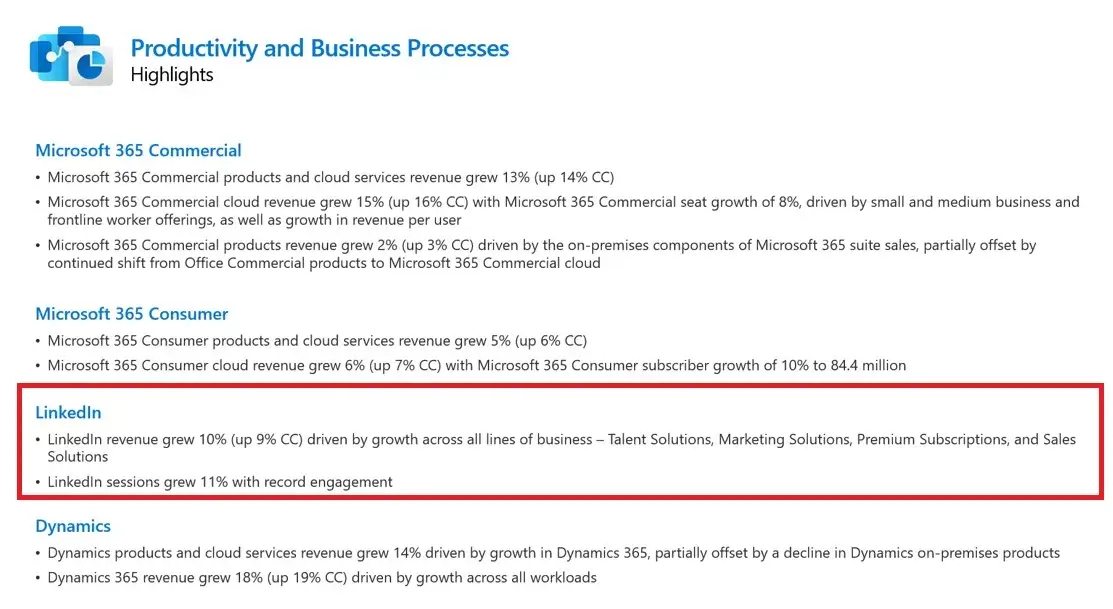
Despite these metric questions, LinkedIn’s revenue grew 10% this quarter, indicating strong commercial performance. The platform continues to evolve, though some question its attempts to incorporate features more commonly associated with traditional social media platforms.
Pinterest: Embracing AI for Enhanced Advertising
Pinterest is making significant strides in AI-powered advertising with its new Performance+ suite. The platform now offers generative AI tools that can transform product images with blank or white backgrounds into lifestyle imagery, significantly enhancing visual appeal. Early adopters like Walgreens have reported impressive results, including a 55% higher clickthrough rate and 13% lower cost-per-click using AI-generated backgrounds.

The platform has also expanded its automation capabilities, allowing advertisers to streamline campaign creation with 50% less input required. Early tests show promising results, with advertisers experiencing a 64% decrease in cost per action and a 30% increase in conversion rates.
Looking Ahead: The Future of Social Media
As we move toward 2025, several key trends are shaping social:
- AI-Driven Automation: Platforms are increasingly leveraging AI for everything from content moderation to ad optimization, with a clear trend toward automated campaign management.
- Enhanced Creator Tools: Platforms are investing heavily in features that help creators manage and monetize their presence more effectively.
- Music and Content Integration: Cross-platform integration, particularly in music and content sharing, is becoming increasingly seamless.
- Smart Advertising: AI-powered tools are making advertising more efficient and personalized, with platforms offering increasingly sophisticated automation options.
- Metric Transparency: There’s a growing discussion about how platforms report their user engagement and success metrics.
As platforms continue to evolve and introduce new features, success in social media marketing requires both strategic thinking and tactical agility. Consider starting with one automated solution at a time to test its effectiveness for your brand. Keep a close eye on your metrics, but don’t be afraid to experiment with new features – whether that’s Instagram’s enhanced DM tools for creator relationships or Pinterest’s AI-powered ad capabilities. Remember that while AI and automation can optimize your campaigns, they work best when guided by clear brand objectives and deep audience understanding.
Want to stay ahead of these rapid changes? Subscribe to our newsletter for monthly breakdowns of new features, expert analysis, and actionable strategies you can implement right away. We distill the noise into clear, practical insights that help you make informed decisions for your social media strategy.





Leave a Reply